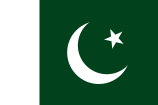Monday, April 25, 2011
The recovery and significance of the inscription, telling a story of the Hindu ruler Veka and his devotion to lord `Siva', was told by leading epigraphist and archaeologist Prof Ahmad Hasan Dani of the Quaid-E-Azam University of Islamabad at the ongoing Indian History Congress here.
If historians, preferred to revise the date of the first Hindu Shahi ruler Kallar from 843-850 AD to 821-828 AD, the date of 138 of present inscription, if it refers to the same era, should be equal to 959 AD which falls during the reign of Bhimapala'', Dani said in a paper `Mazar-i Sharif inscription of the time of the Shahi ruler Veka, dated the year 138'', submitted to the Congress.
The inscription, with eleven lines written in `western Sarada' style of Sanskrit of 10th century AD, had several spelling mistakes. ``As the stone is slightly broken at the top left corner, the first letter `OM' is missing'', he said.
According to the inscription, ``the ruler Veka occupied by eight-fold forces, the earth, the markets and the forts. It is during his reign that a temple of Siva in the embrace with Uma was built at Maityasya by Parimaha (great) Maitya for the benefit of himself and his son''.
The inscription was brought from Mazar-i-Sharif, where the tomb of Hazrat Ali, son-in-law of Prophet Mohammed is located, to Pakistan and is currently housed at the Islamabad Museum, Dani said.
Dani said ``the inscription gives the name of the king as Shahi Veka Raja and bestows on him the qualification of `Iryatumatu Ksanginanka'.... and (he) appears to be the same king who bears the name of Khingila or Khinkhila who should be accepted as a Shahi ruler''.
Dani further said ``he may be an ancestor of Veka deva. As his coins are found in Afghanistan and he is mentioned by the Arab ruler Yaqubi, he may be an immediate predecessor of Veka deva...... Both the evidences of inscription and coins suggest that Veka or Vaka should be accepted as an independent ruler of northern Afghanistan.
``Thus we find another branch of the Shahi ruler in northern part of Afghanistan beyond the Hindukush. Veka is said to have conquered the earth, the markets and the forts by his eight-fold forces, suggesting that he must have himself gained success against the Arab rulers of southern Afghanistan''.
Dani observed that going by the findings it seemed that during the rule of the Hindu Shahi ruler Bhimapala there was a break in the dynasty -- one branch, headed by Jayapala, ruled in Lamaghan and Punjab, and another branch, headed by Veka, ruled in northern part of Afghanistan.
``The northern branch must have come to an end by the conquest of Alptigin in the second half of tenth century AD'', he said.













A good Vedic astrologer could have foreseen all of these things. The use of an astrological horoscope is meant to be practical, not something that is mystical and obscure.
ReplyDelete